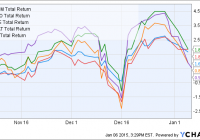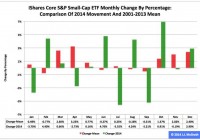Africa: Portfolio Worthy?
Originally published on Dec. 17, 2014 The association with Africa in past months is often linked to Ebola. But, don’t let that overshadow the prosperous investment opportunity offered by the continent. Africa is on the rise as witnessed in recent political stability, a growing middle class, and economic growth outpacing most of the world. Indeed, the GDP of Africa has had steady growth since 2000 averaging over 5% each year, and is projected to finish this year up 5.1% and 2015 up 5.8%. Here are three reasons to consider adding African stocks to your portfolio. Rapid Growth in Developed Countries While some countries are still in transition, Nigeria, Kenya, and Mozambique are growing exponentially, with projected GDP growth in 2015 climbing close to the 19% mark. The opportunity seems to be in the water. With China’s recent investment in the South African Ocean economy, other foreign investors are sure to follow suit with these countries’ large shore lines and port communities; there is a huge opportunity for expanded growth. The Major Players China surpassed the United States in import/export business in 2009 and has since been investing their excess liquidity into infrastructure. Heineken ( OTCPK:HINKF ) has been pouring capital expenditures to the tune of $690 million a year to improve facilities and training in Africa. Other well known internationally-based companies such as Nestle ( OTCPK:NSRGF ) and Unilever (NYSE: UL ) also hold profitable investments in Africa. The United States and Canada Although the United States has lagged behind in African investments, the U.S. recently pledged $14 b illion from U.S. businesses such as GE (NYSE: GE ), Marriott (NASDAQ: MAR ), Chevron (NYSE: CVX ), Coca-Cola (NYSE: KO ), IBM (NYSE: IBM ) and MasterCard (NYSE: MA ). Canada’s Actic, a private equity investor in emerging markets, and Cordiant, an emerging market asset manager, most recently launched a $126 million investment fund for Africa. With a growing middle class of 350 million strong in 2010 and home to six nations with the world’s fastest growing economies, Africa is poised to be an attraction for investors looking for positive growth. Sources: http://blog.trade.gov/2014/07/31/u-s-africa-business-success-stories-how-a-supplier-of-powerboats-to-the-u-s-military-started-doing-business-in-nigeria/ http://www.marketwatch.com/story/you-arent-investing-in-africaand-youre-missing-out-2014-12-02 http://www.investopedia.com/articles/investing/112614/etfs-and-mutual-funds-investing-africa.asp http://www.aljazeera.com/news/africa/2014/08/us-announces-14bn-investment-africa-201485155458455909.html http://www.usatoday.com/story/money/personalfinance/2014/08/03/investing-in-africa/13420007/ http://www.reuters.com/article/2014/05/09/us-heineken-nl-africa-idUSBREA480QG20140509 http://www.timeslive.co.za/politics/2014/12/05/chinese-have-invested-r120-billion-in-south-africa-zuma http://www.economist.com/news/finance-and-economics/21575769-strategies-putting-money-work-fast-growing-continent-hottest

